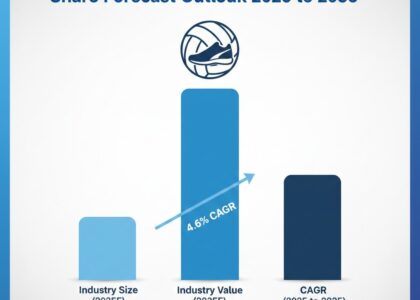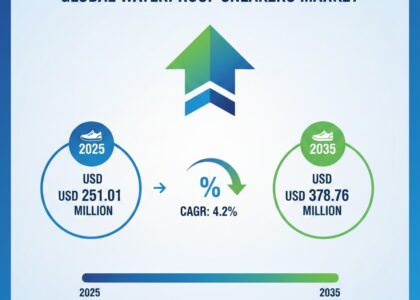
Polyglycerol polyricinoleate (PGPR), a synthetic emulsifier commonly used in chocolate and processed foods, is fast becoming a cornerstone of modern food manufacturing. According to Future Market Insights (FMI), the PGPR market is expected to grow from USD 1.95 billion in 2025 to USD 3.40 billion by 2035, expanding at a CAGR of 5.7% over the forecast period.
Its popularity is no mystery. PGPR is widely used to improve texture and reduce viscosity in chocolate production, effectively cutting costs by allowing manufacturers to reduce cocoa butter content—an expensive raw material. But the real story is more complicated.
Explore Key Trends in the Market: Request Your Sample Report: https://www.futuremarketinsights.com/reports/sample/rep-gb-3896
The Industrial Shortcut We Don’t Talk About
At first glance, PGPR appears to be a miracle additive—cheap, effective, and widely approved for food use. Yet its rapid integration into everything from confectionery to spreads raises real concerns: are we prioritizing industrial efficiency over food integrity?
The use of PGPR is most aggressive in North America and Western Europe, where large-scale manufacturers are optimizing supply chains and driving down ingredient costs. But as PGPR creeps into more products, especially in developing markets, questions about sourcing, purity, and long-term health effects remain largely unaddressed by public discourse.
Growing Need for Market Insights: Access Our Full Report for Thorough Analysis and Trend: https://www.futuremarketinsights.com/reports/polyglycerol-polyricinoleate-market
Lack of Oversight Is the Real Risk
Despite PGPR’s legal status in many countries, the market’s projected expansion is happening within a fog of under-regulation. There are no universally enforced benchmarks for production quality, no uniform disclosure requirements on packaging, and very limited consumer education about what PGPR is or why it’s being used.
Future Market Insights highlights that demand from the confectionery industry remains the primary driver, with the bakery and dairy sectors quickly catching up. Powder and liquid formats dominate the landscape, offering flexibility to manufacturers but often leaving regulators and consumers behind.
What’s Being Overlooked
- Ingredient Transparency: PGPR often appears on labels without context, leaving consumers unaware of what it does—or why it’s replacing more natural ingredients.
- Quality Inconsistencies: As demand surges globally, inconsistencies in the raw material supply chain (castor oil and glycerol) raise questions about product safety.
- Regulatory Gaps: With market growth outpacing regulatory updates, especially in emerging economies, oversight mechanisms are struggling to keep up.
What Needs to Happen
- Global Standards – Regulatory bodies must define consistent safety thresholds and labeling requirements for PGPR across borders.
- Consumer Awareness – Public campaigns should demystify food additives and explain their functional and economic roles.
- Manufacturing Accountability – Producers should be required to disclose the origin and quality of PGPR in all end products.
Not Just an Additive—A Reckoning
PGPR isn’t inherently dangerous. But when an ingredient designed to cheapen production becomes a global crutch for food companies, we should all be paying attention. A booming market doesn’t always mean a healthy one. And in the case of PGPR, growth without scrutiny could cost us far more than we save at the checkout line.
Leading Manufacturers
- Ter Hell & Co. Gumby
- Palsgaard A/S
- Estelle Chemicals Pvt. Ltd.
- DuPont Nutrition & Health
- The Hershey Company
- DPO International Sdn. Bhd.
- Sigma-Aldrich Co. LLC.
- Croda International Plc
- Univar Inc.
 Explore Functional Food Ingredients Industry Analysis: https://www.futuremarketinsights.com/industry-analysis/functional-food-ingredients
Explore Functional Food Ingredients Industry Analysis: https://www.futuremarketinsights.com/industry-analysis/functional-food-ingredients
Key Segments of the Report
By Application:
By application type industry has been categorized into Emulsifying agent, Filling agent, Thickening agent
By Industry:
By industry has been categorized into Food & Beverage, Chocolate, Confectionery fillings, Low-fat spreads, Fats & Oils and Personal Care
By Source:
By source industry has been categorized into Halal, Vegan, Organic and Synthetic
By Region:
Industry analysis has been carried out in key countries of North America, Latin America, Europe, Middle East and Africa and Asia





